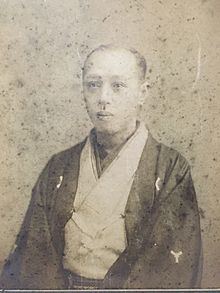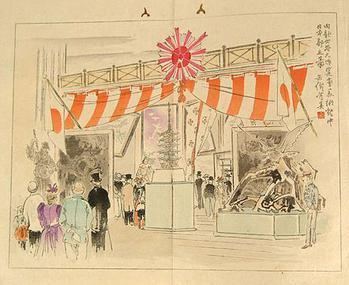Name Kubota Beisen | Died 1906 | |
 | ||
Kubota Beisen (久保田 米僊, 1852 – May 19, 1906) was a Japanese artist and art instructor in the Meiji period.
Contents

Although his style remained recognisably Japanese, his knowledge of Western principles and methods is also reflected in his work. Beisen trained under Suzuki Hyakunen (1825–1891). The way in which he integrated Western perspective and techniques in his work was a self-taught skill.
Career
Kubota was a teacher at the Kyoto Prefectural School of Painting, which was founded in 1878 by Kubota and others. Among his colleagues in establishing the school was the artist Kōno Bairei (1844–95).
War artist
As war artist for Kokumin Shimbun, he accompanied the Japanese army at the time of the war with China in 1894 through 1895. His vivid illustrations of battlefield scenes of the First Sino-Japanese War were wildly distributed in the Japanese population.
When Kubota returned from the front, he was summoned to General Headquarters where he was ordered to create drawings in the presence of the Emperor.
Kubota's artwork was published in Nisshin Sentou Gahou (A Pictorial Record of the Sino-Japanese War). The eleven volumes were published at irregular intervals between October 1894 and June 1895. The volumes are a visual chronicle of the war, beginning with the outbreak of hostilities in the summer of 1894. Kubota created images of Japan's sea-victories. He also published a visual account of Japan's advance into Manchuria. The peace treaty signed between Japan and China was also illustrated as part of this series of drawings.
Selected works
Kubota's published work in Japanese is encompassed in 24 works in 25 publications in 53 library holdings. His one work in English was published in six editions and is found in 84 libraries worldwide.
